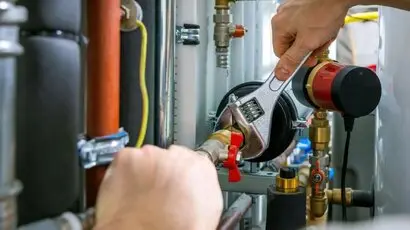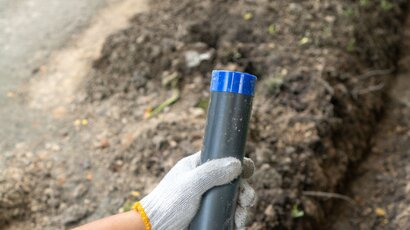If you’ve just had your pipes relined, that’s great news! Relining is a fantastic way to sort out plumbing issues and give old or worn pipes a new lease on life. By applying an epoxy resin inside, relining helps stop leaks and blockages without the need for disruptive replacements. But to make the most of your newly relined pipes, ongoing maintenance is key.
Your relined pipes still need some TLC to stay clear and trouble-free. Ignoring maintenance can result in expensive clogs or leaks. The upside? It’s simple to keep your relined system in top shape by following a few straightforward tips.
Here, you’ll find expert plumbing tips to maintain your pipes post-relining. These practical steps will help keep your pipes in excellent condition for years. Discover how to safeguard your investment and ensure smooth operation.
Monitor Water Pressure
Keeping an eye on your home’s water pressure is essential to maintaining relined pipes. Dramatic fluctuations in water pressure can place excess stress on pipes, causing leaks or bursts over time.
Plumbers recommend installing a water pressure gauge on your main water line. This allows you to monitor pressure and ensure it stays within a safe range of 45-60 PSI. Consistent water pressure in this range reduces strain on pipes.
![]()
Check the pressure gauge regularly. If you notice spikes, like pressure over 80 PSI, or drops below 40 PSI, this indicates an issue. Work with a plumber to identify and correct the problem. Sources may include faulty pressure regulators, rusty pipes restricting flow, or your home’s water supply issues.
Stabilising water pressure prevents damage to relined pipes from pressure swings. Monitoring pressure helps you catch problems early before they worsen. Maintaining healthy water pressure is easy to keep pipes in good shape with a gauge installed.
Avoid Pouring Fats, Oils, And Harsh Chemicals Down Drains
Oils and fats gradually build up on pipe walls, causing clogs and blockages. Chemical drain cleaners, bleach, paint, and aggressive soap scum removers will corrode and degrade the epoxy lining.
Instead, collect any used oils and fats in containers and discard them with your regular trash. Scrape plates of fatty foods like meat, butter, and sauce into the garbage before washing. Use safer natural options like baking soda and vinegar instead of caustic commercial products for chemical drain cleaning. Run hot water while pouring mild dish or hand soap to prevent build-up.
Never use harsh chemicals like paint thinner near drains. Always check product labels to avoid those marked “corrosive” or “toxic.” This keeps dangerous chemicals away from your relined pipes.
Following these best practices protects the integrity of the epoxy lining, preventing costly damages or failures. To maximise your pipes’ lifespan, avoid pouring the wrong liquids down drains.
![]()
Use Drain Strainers To Catch Hair And Food
Drain strainers are an essential tool for keeping relined pipes clear of clogs. Place strainers in the most used sinks, tubs, and showers. These devices catch hair, food scraps, and other debris before they drain, preventing build-up on pipe walls that could impede water flow.
Clean filters regularly by removing the catcher and emptying any collected gunk into the trash. Look for larger items like hair scrunchies or wet wipes that could cause a clog.
Use strainers that attach right to the bottom of the drain for kitchen sinks. Empty these strainers into the trash whenever washing dishes or cleaning the sink to catch all food particles.
Using drain strainers develops a good maintenance habit and keeps drains clear. With effortless regular cleaning, strainers stop harmful accumulation that damages relined pipes. Invest in quality strainers and make them part of your routine.
![]()
Schedule Annual Drain Cleanings
Even with great maintenance habits, it’s wise to schedule professional drain cleanings once a year. Over time, relined pipes can still collect grease, soap scum, mineral deposits, and other subtle build-up. This slowly reduces drainage capacity.
Annual cleanings prevent minor accumulations from becoming major blockages. A drain technician will snake the pipes, scrub away filmy residue, and rinse with high-pressure water jets. For the most thorough cleaning, have drains cleared before wet seasons when drainage gets heavy use—schedule appointments in the fall to prepare for winter or spring to avoid summer clogs.
The small investment of an annual cleaning can prevent emergency drain repairs down the road. It removes grime that regular DIY maintenance misses. Keep your receipts for insurance purposes as well.
Stay ahead of problems with professional drain cleanings and keep your relined pipes cleared for the long haul. Schedule this essential yearly maintenance now.
Watch For Any Leaks And Damp Spots
Look for any signs of moisture or dripping around your relined pipes. Leaks indicate a failure in the epoxy coating.
Inspect the areas around water fixtures, pipes, and drains regularly. Look for water spots or drips on walls, under sinks, and on ceilings below bathrooms. Check for damp spots or musty smells, which may indicate hidden leaks inside walls. Watch for warped cabinets, peeling paint, or bubbling on surfaces.
If you detect a leak, take action immediately. To prevent damage, capture any dripping water in a bucket. Turn off the water valves to stop the flow. Call a plumber to identify the leak source and repair the epoxy lining.
Unaddressed leaks can erode pipes and surrounding materials. But by watching for symptoms, you can get them fixed before significant destruction occurs. Don’t ignore any signs of moisture. Catch leaks early to keep relined pipes in top shape.
![]()
Know The Signs Of Blockages Like Gurgling Drains
Be vigilant for signs of clogs in your newly relined pipes. Blockages that slow water flow can lead to issues if ignored. Watch for common clog symptoms, like gurgling sounds from drains.
This happens when air pockets form in partially blocked pipes. Also, keep an eye out for sinks or tubs that drain slowly, as these suggest an obstruction. Standing water taking time to clear is another warning sign.
Sewage odours that seem to come from your drains can mean gases from a clog are seeping upwards. Finally, toilets that bubble up or overflow may signify a blockage further downstream.
Don’t ignore these warning signs that a minor clog could soon become a complete blockage. Take action at the first gurgles you hear to proactively unclog drains and restore proper water flow before an obstruction worsens. Valuable methods for clearing clogs include using a plumber’s snake, drain auger, or natural drain cleaners.
Use Root Killers To Prevent Roots From Invading Exterior Pipes
Tree roots pose a common threat to the integrity of exterior water and sewer lines. Seeking water, tree roots can worm into tiny cracks or joints in pipes, leading to leaks, blockages, and pipe damage over time.
It is crucial to take preventative action against destructive root growth in relined pipes. Applying an annual root killer treatment provides an easy safeguard. Root killers dissolve the intruding roots and create an inhospitable environment inside pipes.
Look for copper sulphate- or sodium hydroxide-based solutions. Follow product instructions for application around the pipe perimeter. The small investment of an annual root killer treatment can prevent thousands in emergency repairs from root invasions down the road.
Be proactive against roots to maximise your relined pipes’ trouble-free lifespan. Maintaining a root-free sewer line also prevents messy sewage backups in your home. Protect your relined pipes with regular rootkiller treatments.
![]()
Keep Your Pipes in Peak Shape with Proper Trenchless Pipe Relining
Proper maintenance is critical to getting the most out of your relined pipes. You can keep your pipes in optimal shape by monitoring pressure, avoiding pipe-damaging products, using drain strainers, scheduling annual cleanings, watching for leaks, clearing clogs quickly, and preventing root invasions. While relining provides a like-new upgrade to aging plumbing, the pipes still require vigilant care and attention to prevent costly repairs.
Following these tips from our professional plumbers at WP Plumbing will help safeguard your investment in our relining services. We want your pipes to provide many more years of reliable service. Don’t let neglect undo the benefits of relining. Take the time to keep your pipes healthy and your home safe.
If you need any help inspecting, maintaining, or repairing your relined pipes, contact the experts at WP Plumbing today. Our skilled team is always available for routine maintenance, drain cleaning, leak detection, and other plumbing needs. We want to help our customers protect their plumbing investments. Get in touch with WP Plumbing to keep your pipes running like new.








